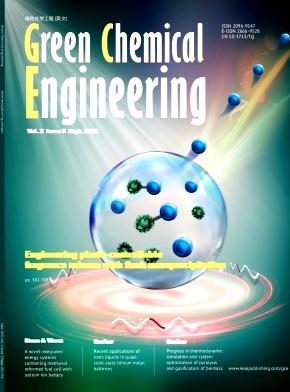Development of an interpretable QSPR model to predict the octanol-water partition coefficient based on three artificial intelligence algorithms
IF 9.1
Q1 ENGINEERING, CHEMICAL
引用次数: 0
Abstract
This study aims to significantly improve existing quantitative structure-property relationship (QSPR) models for predicting the octanol-water partition coefficient (KOW). This is because accurate predictions of KOW are crucial for assessing the environmental behavior and bioaccumulation potential of chemicals. Previous models have reported determination coefficient (R2) values between 0.9451 and 0.9681, and this research seeks to exceed these benchmarks. Three machine learning (ML) models are explored, i.e., feed-forward neural networks (FNN), extreme gradient boosting (XGBoost), and random forest (RF). Using a dataset of 14,610 solvents (14,580 after data cleaning) and 21 molecular descriptors derived from SMILES representations, we rigorously evaluate these models based on R2, mean absolute error (MAE), root mean squared error (RMSE), and mean relative error (MRE). Notably, the best model developed, the XGBoost-based QSPR, demonstrated exceptional performance, exhibiting an impressive R2 value of 0.9772, surpassing benchmarks set by prior research models. Additionally, shapley additive explanation (SHAP) analysis is also employed for model interpretation, and it is revealed that the top five influential input features include SMR_VSA8, SMR_VSA3, Kappa2, HeavyAtomCount, and fr_furan. This study not only sets a new benchmark for KOW prediction accuracy but also enhances the interpretability of QSPR models.

基于三种人工智能算法开发可解释的 QSPR 模型,用于预测辛醇-水分配系数
本研究旨在显著改进现有的定量构性关系(QSPR)模型预测辛醇-水分配系数(KOW)。这是因为准确的KOW预测对于评估化学品的环境行为和生物积累潜力至关重要。以前的模型报告的决定系数(R2)值在0.9451和0.9681之间,本研究寻求超越这些基准。探索了三种机器学习(ML)模型,即前馈神经网络(FNN),极端梯度增强(XGBoost)和随机森林(RF)。使用14,610种溶剂的数据集(数据清洗后为14,580种)和21种来自SMILES表示的分子描述符,我们基于R2、平均绝对误差(MAE)、均方根误差(RMSE)和平均相对误差(MRE)对这些模型进行了严格评估。值得注意的是,开发的最佳模型,基于xgboost的QSPR,表现出卓越的性能,显示出令人印象深刻的R2值0.9772,超过了先前研究模型设定的基准。此外,还采用shapley加性解释(SHAP)分析对模型进行解释,发现影响最大的5个输入特征包括SMR_VSA8、SMR_VSA3、Kappa2、HeavyAtomCount和fr_furan。该研究不仅为KOW预测精度提供了新的基准,而且提高了QSPR模型的可解释性。
本文章由计算机程序翻译,如有差异,请以英文原文为准。
求助全文
约1分钟内获得全文
求助全文
来源期刊

Green Chemical Engineering
Process Chemistry and Technology, Catalysis, Filtration and Separation
CiteScore
11.60
自引率
0.00%
发文量
58
审稿时长
51 days
 求助内容:
求助内容: 应助结果提醒方式:
应助结果提醒方式:


